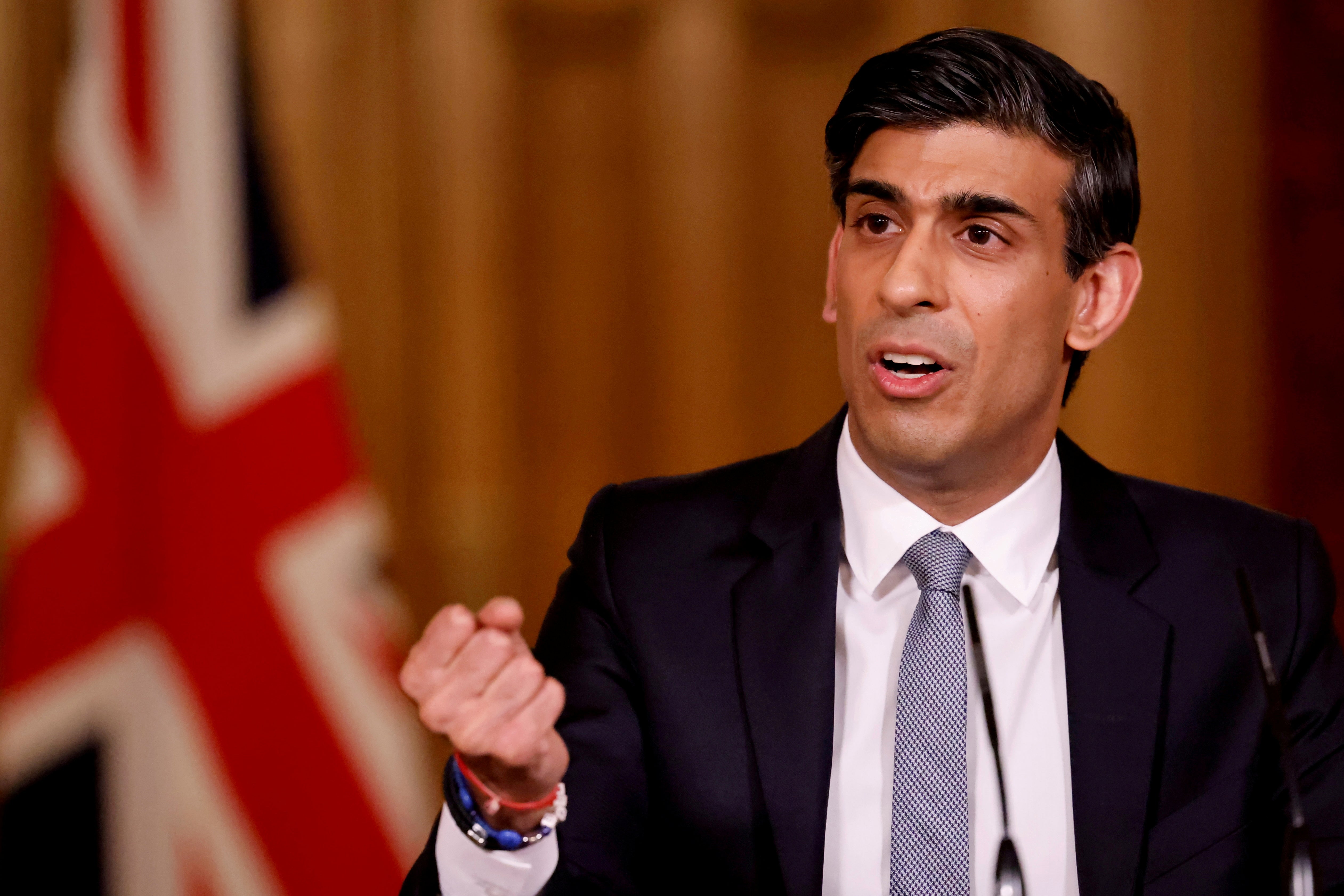Government borrowing hits highest level since end of Second World War
Covid spending pushes public sector net debt to 97.7 per cent of GDP

Your support helps us to tell the story
From reproductive rights to climate change to Big Tech, The Independent is on the ground when the story is developing. Whether it's investigating the financials of Elon Musk's pro-Trump PAC or producing our latest documentary, 'The A Word', which shines a light on the American women fighting for reproductive rights, we know how important it is to parse out the facts from the messaging.
At such a critical moment in US history, we need reporters on the ground. Your donation allows us to keep sending journalists to speak to both sides of the story.
The Independent is trusted by Americans across the entire political spectrum. And unlike many other quality news outlets, we choose not to lock Americans out of our reporting and analysis with paywalls. We believe quality journalism should be available to everyone, paid for by those who can afford it.
Your support makes all the difference.The vast sums the government has borrowed during the Covid-19 pandemic have pushed the deficit to its highest point since the end of the Second World War, according to figures.
Public sector net borrowing – the government’s deficit – reached £303.1bn in the financial year to the end of March, the Office for National Statistics said.
That figure equates to 14.5 per cent of gross domestic product (GDP), the highest level since 1946 when the deficit hit 15.2 per cent of GDP.
And it marks a rise of £246.1bn more than the deficit of £57bn in the tax year ending March 2020.
In the post-war era, the deficit peaked in the aftermath of the 2008 financial crisis, hitting around 10 per cent of GDP. The average deficit since 1970 has been 3.4 per cent of GDP.
The last year’s borrowing pushed public sector net debt up to £2,141.7bn, which is 97.7 per cent of GDP, the largest proportion since the early 1960s.
The government has spent billions of pounds propping up the economy since the pandemic started more than a year ago.
Notably, it covered salaries of staff whose workplaces closed down during the country’s lockdowns.
The furlough scheme has so far cost the taxpayer around £58bn, according to data from last month.
Michal Stelmach, a senior economist at KPMG, said: “Rising debt is largely an unfortunate consequence of the government’s focus on shielding the economy as much as possible from the impact of Covid-19.
“However, doing otherwise could have created long-lasting scars which would be far worse for fiscal sustainability.”
Mr Stelmach said that while borrowing has so far risen to pay for increased spending, the government is likely to need to borrow to make up for a shortfall in the tax it collects this year.
This is partly because of chancellor Rishi Sunak’s £12.5bn “super deduction” on corporation tax for some businesses and will be coupled with lower amounts of income tax as furlough ends.
The amount of tax collected by the government dropped by £34.2bn to £523.6 billion in the year to the end of March, the ONS said.
It put the drop down to a fall in the amount of VAT, business rates and fuel duty collected.
Borrowing was still lower than had been expected by some experts.
The Office for Budget Responsibility (OBR) had forecast public borrowing would reach £354.6bn.
The OBR’s forecast also included £27.2bn, which it predicts as the cost of government guarantees for business loans. However, even with this cost added, borrowing was lower than expected.
Samuel Tombs, the chief UK economist Pantheon Macroeconomics, said: “Public borrowing probably will undershoot the OBR’s forecast again in 2021/22, given that it was based on a forecast that GDP would rise by only 4.0 per cent this year; we look for a 6.6 per cent increase.”
The ONS’s figures are provisional and subject to change in the coming months.
Additional reporting by Press Association
Join our commenting forum
Join thought-provoking conversations, follow other Independent readers and see their replies
Comments